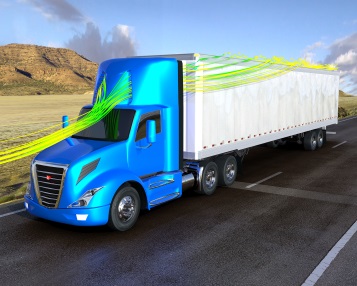Incorporating Plastics Into Heavy Duty Trucks to Meet New Fuel Efficiency Standards

The United States has taken a strong stance on reducing greenhouse gas emissions and increasing the quality of our climate through the tightening of vehicle fuel economy standards. On August 16th, new standards were established for medium and heavy-duty trucks to help reduce GHG emissions and energy consumption while increasing fuel efficiency. These standards, finalized by the U.S. Environmental Protection Agency (EPA) and the U.S. Department of Transportation’s National Highway Traffic Safety Administration (NHTSA), were designed under President Obama’s Climate Action Plan and will influence vehicle production through model year 2027.
To introduce a new generation of trucks that can meet the fuel economy and emission standards, manufacturers are utilizing plastics and plastic composites to replace heavier metal parts. This can reduce the cost and weight of the vehicle, improve aerodynamics, increase fuel efficiency, and diminish the resources associated with production.

Heavy-duty trucks make up the second largest vehicle segment and produce around 20% of the GHG emissions in America. By 2030, emissions could well exceed passenger vehicle emissions, making it imperative for manufacturers to step up to the challenge of meeting the new standards.
Once fully implemented, the Administration indicates the truck standards will:
- Reduce CO2 emissions by approximately 1.1 billion metric tons
- Save $170 billion in fuel costs
- Reduce oil consumption by two billion barrels over the lifespan of the vehicles sold
- Provide $230 billion in societal net benefits
- Increase climate quality and improve the health of Americans
Learn more about the new fuel efficiency standards for medium- and heavy-duty vehicles
